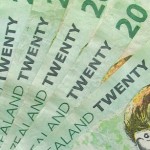Yesterday’s trade saw EUR/HKD within the range of 9.6338-9.6887. The pair closed at 9.6754, gaining 0.31% on a daily basis.
At 7:34 GMT today EUR/HKD was down 0.27% for the day to trade at 9.6484. The pair broke the first key daily support and touched a daily low at 9.6377 at 5:45 GMT.
Fundamentals
Euro zone
Italian GDP growth – preliminary estimate
The preliminary estimate of Italys annual Gross Domestic Product probably pointed to a 0.4% contraction in the third quarter of the year, according to the median forecast by experts. In Q2 economy shrank at an annualized pace of 0.2%, according to final data, released on August 29th.
On a quarterly basis, Italian economy probably contracted 0.1% in Q3, following another negative growth rate of 0.2% during the second quarter. In Q2 nations GDP was influenced by a drop in investment activity. Gross fixed capital formation dropped by a seasonally adjusted rate of 0.9%, dragged down by a 1.5% decrease in machinery and equipment and a 0.9% fall in construction investment. Domestic consumption remained unchanged in Q2.
In case a slower-than-projected rate of growth was reported, this would have a negative effect on the single currency. The National Institute of Statistics (Istat) will release the preliminary GDP data at 9:00 GMT.
Euro zone consumer inflation – harmonized
The annualized final consumer price index in the Euro zone, evaluated in accordance with Eurostat’s harmonized methodology, probably confirmed the preliminary inflation estimate for October at 0.4%, according to the median estimate by experts. In September the HICP has been reported at 0.3%, which was in line with the preliminary estimate. According to the preliminary data released on October 31st, the sector of services is expected to show the highest annual rate in October (1.2% compared to 1.1% in September), followed by food, alcohol and tobacco (0.5% compared to 0.3% in September), non-energy industrial goods (-0.1% compared to 0.2% in the preceding month) and energy (-1.8% compared to -2.3% in September).
The index shows the change in price levels of a basket of goods and services from consumer’s perspective and also reflects purchasing trends. The main components of the HICP are food, alcohol and tobacco (accounting for 19% of the total weight), energy (11%), non-energy industrial goods (29%) and services (41%).
The HICP is used to evaluate and compare inflation rates between Member States, according to Art. 121 of the Amsterdam’s Agreement and directives by the European Central Bank (ECB), in order the latter to achieve price stability and the implementation of monetary policy. The HICP aggregates are calculated as a weighted average of each member state’s HICP components.
In case the HICP accelerated more than anticipated, thus, approaching the 2% inflation objective set by the ECB, this would certainly support demand for the euro, because of the lesser possibility that the bank will introduce additional measures in order to stimulate economic activity.
The annualized final Core HICP for October probably also matched the preliminary estimate, reported at 0.7% on October 31st. In September annualized core inflation was reported at 0.8%. This index excludes volatile categories such as food, energy, alcohol and tobacco. Eurostat is scheduled to release the official inflation data at 10:00 GMT.
Euro zone GDP growth – preliminary estimate
The seasonally adjusted preliminary Gross Domestic Product in the Euro zone probably expanded at an annualized rate of 0.7% during the third quarter, according to expectations, or the same rate as in the second quarter, according to final data reported on September 5th. The GDP represents the total monetary value of all goods and services produced by one nation/region over a specific period of time. What is more, it is the widest indicator of economic activity in the region. The report on GDP holds a lot of weight for traders, operating in the Foreign Exchange Market, because they will look for higher rates of growth as a sign that interest rates will follow the same direction. Higher interest rates will usually attract more investors, willing to purchase assets in the Euro area, while, at the same time, this will increase demand for the common currency. Therefore, in case growth in the single currency zone exceeded expectations, this would heighten the appeal of the euro. Eurostat is expected to release the preliminary GDP report at 10:00 GMT.
Hong Kong
Hong Kongs economy probably expanded at an annualized rate of 2.0% during the third quarter of the year, according to expectations. In Q2 the annualized Gross Domestic Product rose at a pace of 1.8%, or the slowest since Q3 2012, due to a fall in tourist spending and a concurrent slowdown in domestic demand. Total exports of goods rose 2.3% year-on-year in real terms during the second three months, following another 0.5% gain in Q1. Exports of services dropped 2.3% year-on-year in real terms. Private consumption expanded at an annualized rate of 1.2% in the second quarter, following two quarters of subdued economic growth, while investment expenditure relapsed to a 5.6% drop, upon a distinct fall in machinery and equipment acquisition, according to data by the Census and Statistics Department.
Higher-than-anticipated rates of economic growth would certainly boost the local dollar. The official GDP figure is due out at 8:30 GMT.
Pivot Points
According to Binary Tribune’s daily analysis, the central pivot point for the pair is at 9.6660. In case EUR/HKD manages to breach the first resistance level at 9.6981, it will probably continue up to test 9.7209. In case the second key resistance is broken, the pair will probably attempt to advance to 9.7530.
If EUR/HKD manages to breach the first key support at 9.6432, it will probably continue to slide and test 9.6111. With this second key support broken, the movement to the downside will probably continue to 9.5883.
The mid-Pivot levels for today are as follows: M1 – 9.5997, M2 – 9.6272, M3 – 9.6546, M4 – 9.6821, M5 – 9.7095, M6 – 9.7370.
In weekly terms, the central pivot point is at 9.6629. The three key resistance levels are as follows: R1 – 9.7455, R2 – 9.8349, R3 – 9.9175. The three key support levels are: S1 – 9.5735, S2 – 9.4909, S3 – 9.4015.





